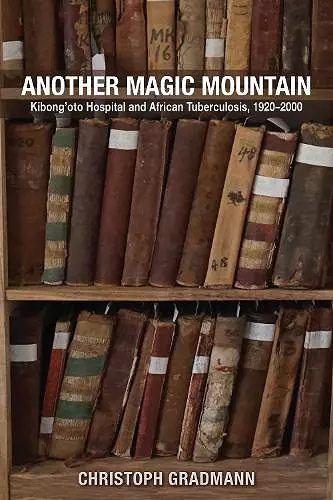Another Magic Mountain
Kibong'oto Hospital and African Tuberculosis, 1920–2000
Format:Paperback
Publisher:Ohio University Press
Publishing:10th Jun '25
£28.99
This title is due to be published on 10th June, and will be despatched as soon as possible.

A case study of Tanzanian tuberculosis treatment during the twentieth century
Although one of the world’s deadliest diseases, tuberculosis today is confined to a small group of countries, including Tanzania. This book chronicles tuberculosis treatment at a specialized hospital from colonial to postcolonial times, and from the days when surgery and fresh air were common treatments to more recent times of chemotherapies and the HIV/tuberculosis coepidemic.
Kibong’oto Hospital, opened in 1926, is an East African tuberculosis treatment center located on the slopes of Mount Kilimanjaro. Its history is crucial to understanding tuberculosis in Tanzania and, more broadly, in Africa. With the hospital as a point of departure, Christoph Gradmann presents a history of this disease that engages with local and regional contexts rather than with international elite science and health policies.
The book addresses key questions about the African experience with tuberculosis:
—What did it mean to do clinical science on tuberculosis in colonial and postcolonial contexts?
—Along which trajectories did medical practice and research evolve in a place where international advances in medical science were sometimes heard of only faintly and where resources could be scarce?
—How did a large hospital with several hundred beds dedicated to the treatment of just one condition figure in the development of national and regional health systems?
—How did Kibong’oto Hospital, a pride of colonial health governance, transition after Tanzania gained independence?
—How did treating and researching tuberculosis change throughout the twentieth century in an African hospital dedicated to that condition?
—How did research at the hospital contribute to tuberculosis-control strategies on national and international levels?
The book is based on the hospital’s unique archive: its surviving library of thousands of case summaries. Since 1926, this library has documented an enormous number of patient lives, staff careers, diagnoses, treatments, clinical trials, and much more. For today’s readers, the library provides insight into a history of clinical medicine in Africa, for which very few comparable archives exist.
Gradmann supplements this site-specific research with material from national and international archives, as well as interviews with former staff involved in that history. The book’s four chapters offer perspectives on colonial epidemiological research in the interwar years; on late colonial healthcare development plans and the arrival of modern drug therapies; on the role of a...
Despite its ubiquity there are countless untold stories of coping with tuberculosis. Once revealed, as Christoph Gradmann has done so expertly here, they can help us understand better how we might seek to avoid making the same mistakes again.
* Helen Bynum, author of Spitting Blood: The History of TuberculosISBN: 9780821426333
Dimensions: unknown
Weight: unknown
328 pages